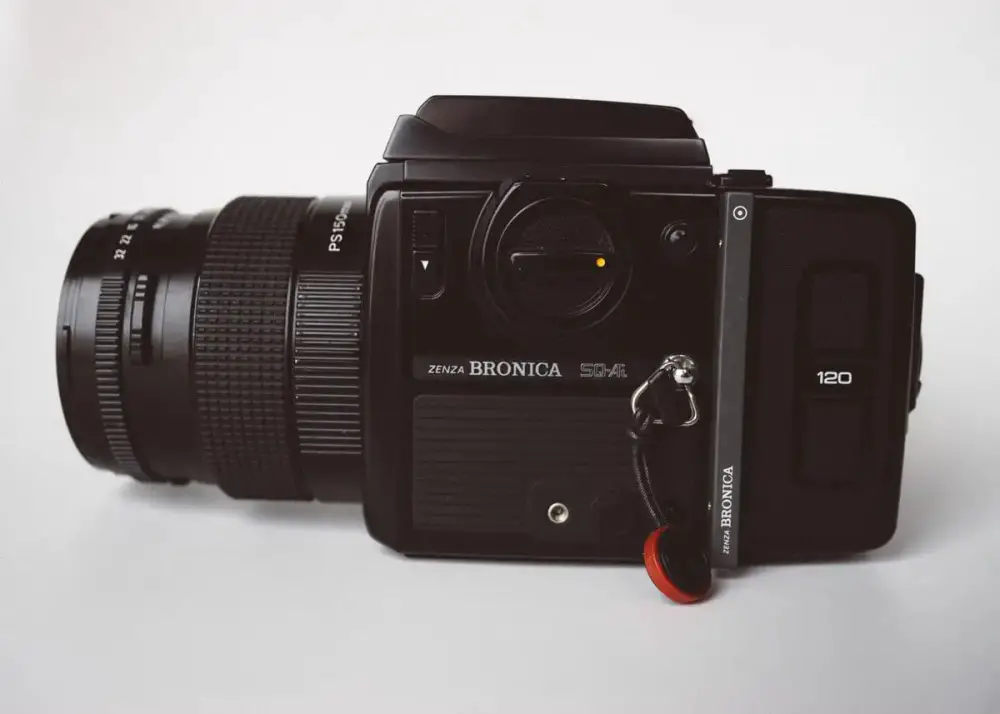

My first impression on hanging the roll of negatives to dry was how sharp and crisp they were. Finally, I developed the film in Rodinal (1+25) at 20☌.Ĭontrary to some reports I’ve seen elsewhere on the web, the film went onto the reel very easily with no obvious curl to the acetate. I then attached a 720nm infrared filter and based on what I had been reading metered the scene at 12 ISO, an increase in exposure of five stops.
BRONICA SQ BACK ISO
The film was rated at 400 ISO per the box and I shot a couple of frames without any filtration at this speed.

BRONICA SQ BACK PLUS
My weapon of choice for this experiment was a Bronica SQ-A, for no reason other than I like using it, plus the mirror lock-up would be useful. I’m not going to quibble though and in any case this was about experimentation. Now before any one shouts I realise that Rollei INFRARED 400 is not a ‘true’ infrared film, but one with near-infrared sensitivity to about 820nm. So, the first roll, which I bought to test before using the second in “anger”, has now been exposed within the confines of my back yard. Well, I’m consigned to barracks and in any event the wedding is postponed until 2021. As an enthusiastic (digital) infrared photographer, I have an IR-converted Fuji X-T1, and so I picked up a couple of rolls of 120 Rollei Infrared 400 intending to use it whilst in Devon for a family wedding. I think that in the back of my mind was that these would be used for something “special” or a specific project that took into account each film stocks particular properties or quirks.
BRONICA SQ BACK PATCH
The following day, like a grown-up, I opened a second roll and this time put it in a Bronica SQ-A and headed for a small patch of woodland with a tripod and a set of filters.īack in January when I was stocking up with film for the Spring/Summer months I picked up a few single films of different stocks to my usual to try out as the opportunity arose. Remember me saying that orthochromatic film has no red sensitivity? So, why did I pop an orange filter inside my pinhole camera? I was pretty disappointed with the negatives until the light bulb moment happened and I realised that whilst the conditions that day were good for an orange filter – the film wasn’t! The first roll, through the pinhole, was not destined to be a big success due to a schoolboy error.

Orthochromatic films can create interesting effects in pictorial applications in that red colours become dark or black, and everything blue becomes white or light coloured.

Early films were typically orthochromatic until the process of adding dyes to increase this sensitivity was developed. Orhochromatic films on the other hand are only sensitive to a part of the visible spectrum, ranging from blue to the end of green. So what is an orthochromatic film? The film stocks we typically use nowadays are panchromatic meaning they react to all colours of the visible spectrum. Over the course of three days I used a roll of the 120 in my Zero Image pinhole camera and another roll in the Bronica SQ-A and finally the Rollei Ortho was put to use in my Horizon S3 35mm swing-lens panoramic camera. When they brought it out in 120 last year I bought a few rolls but for various reasons I hadn’t used them until very recently when the arrival of a 35mm roll of Rollei Ortho 25 Plus prompted me to have a play. Ilford Ortho is an ISO 80 orthochromatic black & white film with fine grain and sharpness and “perfect for stunning landscapes” according to the Ilford website.


 0 kommentar(er)
0 kommentar(er)
